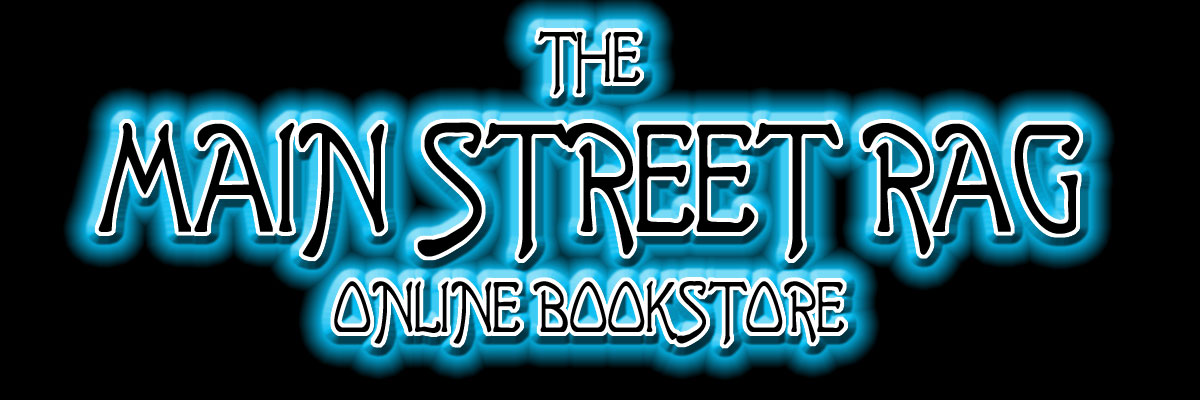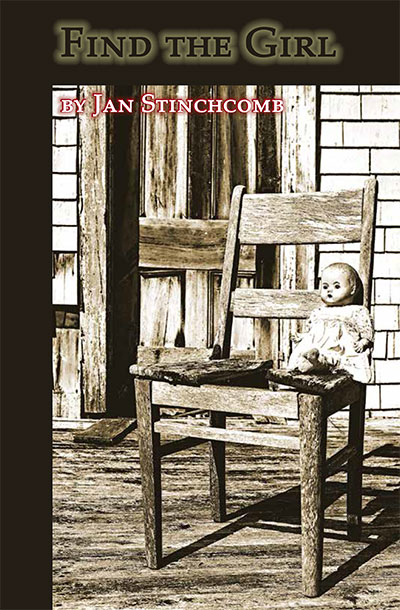A novella by
Jan Stinchcomb
ISBN: 978-1-59948-508-9, ~160 pages, $12.95
Release date: March 3, 2015
Synopsis
Madeleine Reynolds is a girl who notices everything in a life filled with mysteries. The fault lines that run through her sheltered Catholic parish do nothing to deter her from tracking down the truth, especially when a neighborhood girl goes missing. Determined to learn the fate of that girl, Madeleine follows a thread of dark secrets until she runs into her own family history. Set in the turbulent San Francisco Bay Area of 1979, Find the Girl portrays the world of contradictions that Madeleine must navigate as she tries to disentangle truth from rumor and solve the greatest mystery of all: how to find the woman she is meant to be.
 Jan Stinchcomb was born and raised in the San Francisco Bay Area, but she has passed the driver’s license test in four states. Her short stories have been published or are forthcoming in PANK, A cappella Zoo, Rose Red Review, Bohemia, and Luna Station Quarterly, among other places. She holds a doctorate in comparative literature from the University of Texas. She now lives in Southern California with her husband and two daughters.
Jan Stinchcomb was born and raised in the San Francisco Bay Area, but she has passed the driver’s license test in four states. Her short stories have been published or are forthcoming in PANK, A cappella Zoo, Rose Red Review, Bohemia, and Luna Station Quarterly, among other places. She holds a doctorate in comparative literature from the University of Texas. She now lives in Southern California with her husband and two daughters.
A teen-age girl, Molly, goes missing. What’s happened to her? Where is she? Is she alive? Madeleine, a slip of a girl, not yet ten, on the verge of womanhood, wants to know. She asks the grown-ups in her life for information. They know something, but whatever it is that they know, they won’t say. So Madeleine, the soul of courage, goes undercover, sets out on her own and discovers, like any good heroine, even more truth than she was looking for. An important story, fresh and new and at the same time old as the hills, or as a Greek play. In conception passionate, in its telling witty and calm, this book is a pleasure to read, and leaves us wiser. –Max Schott
Find the Girl explores the confusion, misinterpretations, and mystery that encapsulate childhood. This nine-year-old narrator’s curiosity and spunk fuel a discovery of a family secret. Her close-friendship with an older sister sustains her, but she is quietly disturbed by the story of a local missing girl. She begins to bend behavior-rules, seeks adventure and independence, which result in internal and external complications. Family loyalties are tested, friendships tweaked, and her own sense of right and wrong, of tolerance, develops, deepens, expands. —Gail Waldstein, author of To Quit This Calling
1
Madeleine/Madeleine
On Easter Sunday of 1979, the devil deposited a banned book into my older sister’s basket. This posed an immediate problem for me. I had to get to the book, but I knew what I was up against. My sister wouldn’t have shared the book with me willingly, just as she wouldn’t have shared a new blouse or a piece of jewelry, and since I did not dare remove my sister’s property from her room, I knew what would have to happen, later, when I could find a moment: I would snatch the book and then lie on my belly on the floor of my walk-in closet and read by the light of a single bulb, and all the while I would be listening for my sister’s footsteps, unmistakable in her clunky platform shoes.
But until that moment I had to go back to pretending to be nothing more than a young girl in my parents’ house. As I sat at their table for the holiday dinner, my poor parents had no idea what was about to happen to me. It was just another Easter Sunday. Ham is mixed up in my memory of that day, with a touch of brown sugar and Madeira wine. Jell-O salad figures prominently, and while I could never bear to swallow it, I was not immune to its wondrous, jiggling spectacle. And what would have been for dessert? It must have been a pie, but I can’t recall which kind. What I do remember clearly is rising from that table, ostensibly to use the restroom, and going upstairs to my sister’s room. I couldn’t find her Easter basket right away, and so I felt a very familiar twinge of disappointment. Yet again my sister had intuited what I wanted and hidden it away, much as she would a new record album or a tantalizing bottle of nail polish.
But I found the basket, finally. The book was in it, stashed under a pastel rainbow of foil-covered chocolate eggs. I remember the pleasure of holding in my hands the tidy rectangle of a new, not-yet-thumbed paperback. The cover was pleasing, seeming to tell a story, or at least to jumpstart the imagination. How could I not want to know what was in there? The cover showed a girl standing before a mirror, but everything about her evoked the past. No platform shoes or lip gloss or jeans. No halter top. Her hair was long, like mine, but done up in a style that could be accomplished only with the help of an upstairs maid. And what she was wearing I had never seen before. Was it a slip, perhaps? It laced up the back. Certainly it couldn’t be a dress, although it did resemble, remotely, one of my sister’s sundresses. It managed to be very suggestive although it covered more skin than most of my sister’s clothes, with their sheer fabric and spaghetti straps. Even as a child I knew that the dress meant trouble, a trouble that originated in the female body. In my body.
The title was what cinched it. For years I thought I must have had it all wrong and that I had somehow fantasized the title. Surely it could not be true, but there it was all the same: my own name. This was my book that I held in my hands. The heroine and I (the girl in the dress and I) shared the same name, Madeleine. And this I took as all the more reason why I should read it. It called to me. It named me. It belonged to me. After all, I was the bookworm, the voracious reader, the one our parents didn’t worry about. That girl was me, not my sister.
To be fair, though, my sister, Violet, looked more like the girl on the cover. Violet looked like the girls on all the covers, and that was what she ultimately became, a model. I worshipped my sister and could turn red in the face defending her, but I had nothing in common with her. When she passed old clothes and shoes on to me, I put them on as if they had soaked up her magic and could transform me, but they never even fit me, especially after Violet’s curves had left their mark. Nevertheless I set up an archive of my sister’s cast-off clothing in my own closet, and it was only because of my rigid posture and perfect sisterly faith that I was able to wear the church clothes that I was swimming in. The clothes were right because they were hers.


